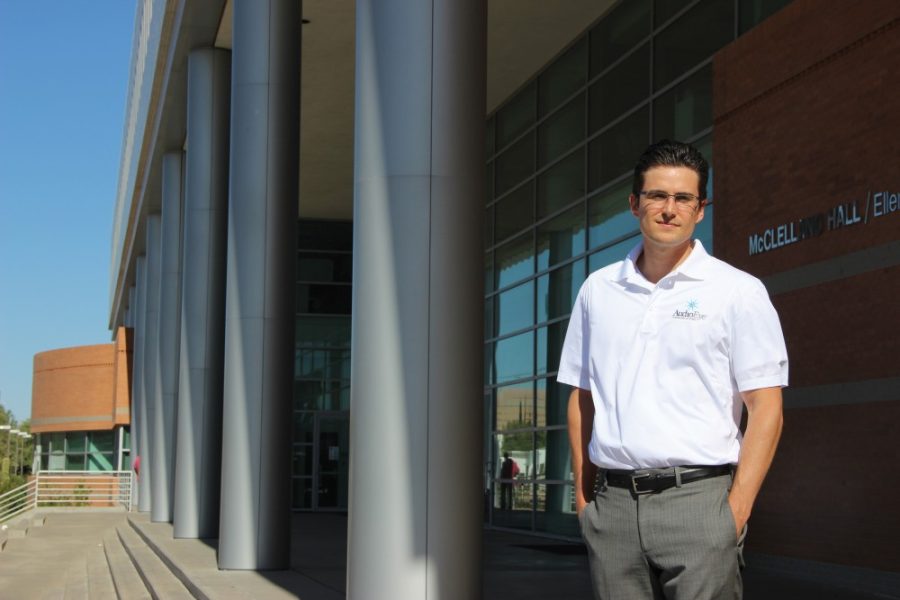For people with certain disabilities, surfing the web can be difficult. This is a problem that the Tucson based company, AudioEye Communications seeks to solve.
With the help of several graduate students from the UA’s Department of Management Information Systems, AudioEye has developed technology that converts the text on a webpage into audio.
MIS showcases this technology by using it on its homepage.
“We’re making a mirror image of the MIS website in audio,” said Nathaniel Bradley, CEO and co-founder of AudioEye. “So, whatever they write in text, we publish in audio.”
AudioEye also provides captioning for video files.
“Those types of services are enabling to disabled users,” Bradley said. “They’re also enabling to the general populace of the campus that is now utilizing mobile voice technology to use the website.”
The technology provides a way for users to navigate a site via sound. When a page is opened, the user hears a tone that signifies the AudioEye service is available. By pressing the spacebar, the AudioEye “playlist” is opened and users navigate around the site by using the arrow keys. The menus are read either by a computer-generated voice or a voice-over actor.
A department of the Eller College of Management, MIS’ purpose is “to use technology to improve business processes and efficiency,” said Anji Siegel, director of special programs for MIS.
Every spring, a team of three to five graduate students collaborate with a different company to solve a business problem. At the end of the semester, the team presents its solution to the company.
In the past four years, multiple teams have been paired with AudioEye to test and review its technology.
“Our relationship with the MIS department allows us to showcase and share the current iterations of the software, and allows the students to review it and provide their input,” Bradley said. “They have been extremely helpful.”
Sanjay Reddy, a graduate student from MIS who took part in the project, said it was a unique and challenging experience.
“We tried to put ourselves in their shoes and ask, ‘How would they navigate the systems?’” Reddy said.
The technology makes Internet content accessible to people with impairments such as vision loss, dyslexia or those with a loss of motor function that make it difficult or impossible to manipulate a mouse.
“Our platform allows users to gain access to any content over the Internet without purchasing additional equipment or downloads,” said Paul Lyons, vice president of development at AudioEye.
The services provided are in line with the Twenty-First Century Communications and Video Accessibility Act of 2010, which seeks to “increase the access of persons with disabilities to modern communications,” according to the act.
Although the platform was designed to address the needs of people with disabilities, the technology is useful to everyone in that it offers a unique way to interact with online content, said Lyons.
“We’re expanding the capabilities of the software in several different ways,” said Sean Bradley, chief technical officer for AudioEye, adding that they are looking at ways to make the technology more intuitive, as well as incorporating voice and gestural navigation in which “the user can use different types of motion to navigate a browser.”
“We’re really excited about our partnership with the University of Arizona and the MIS department, and the continuation of that.”
Nathaniel Bradley said he hopes the technology will eventually be adopted by all UA colleges, as well as higher-learning institutions nationwide.
“Making college campuses talk is a critical on-ramp for disabled students that deserve full access to college websites,” he said.
Recently, AudioEye received recognition at the 2013 Edison Universe Innovation Awards, including a Gold Edison Award in the category of “lifestyle and social impact” and the sub-category of “quality of life.”









